UPSC Daily Current Affairs: 2nd October 2024 | Current Affairs & Hindu Analysis: Daily, Weekly & Monthly PDF Download
GS2/Governance
Reforming the Insolvency and Bankruptcy Code (IBC)
Source: Business Standard

Why in News?
According to the G20 Sherpa and former CEO of Niti Aayog (Amitabh Kant), the Insolvency and Bankruptcy Code (IBC) is in need of second-generation reforms to acknowledge concerns regarding the present functioning of the Code.
What is the Insolvency and Bankruptcy Code (IBC)?
- The IBC is India's primary legislation for bankruptcy, established to consolidate existing regulations into a single framework.
- It serves as a comprehensive solution for resolving insolvencies, addressing a previously lengthy and complex process.
- One of its key objectives is to safeguard the interests of small investors.
- It aims to simplify the process of conducting business by streamlining bankruptcy procedures.
What is the Process Followed under the IBC?
- The Insolvency and Bankruptcy Board of India (IBBI) regulates insolvency processes and oversees entities like Insolvency Professional Agencies (IPA) and Insolvency Professionals (IP).
- Established on October 1, 2016, IBBI was given statutory authority through the IBC.
- The IBC applies to individuals, companies, Limited Liability Partnerships, and partnership firms.
- In case of loan defaults, either the creditor or the debtor can file for the Corporate Insolvency Resolution Process (CIRP) under Section 6 of the IBC.
- The minimum default amount for filing insolvency was initially ₹1 lakh but has been increased to ₹1 crore due to pandemic-related stresses on businesses.
- Applications are submitted to designated adjudicating authorities (AAs), specifically the National Company Law Tribunal (NCLT) benches.
- The NCLT must admit or reject applications within 14 days, providing reasons for any delays.
- Once an application is accepted, the resolution process must be completed within a mandatory timeframe of 330 days.
Issues Faced in the Implementation of the IBC
- There are significant delays in resolving bankruptcy cases, with the average time taken exceeding the 330-day target, averaging 716 days in FY24 compared to 654 days in FY23.
- The approval rate for resolution plans is low, with the average admission time for cases increasing to 650 days in FY22 from 468 days in FY21.
- Many cases end in liquidation, contradicting the IBC's goal of resolving bankruptcy effectively.
- Recovery rates for creditors are declining, with the percentage of admitted claims recovered falling to 27% in FY24 from 36% in FY23.
- Operational issues with NCLT benches stem from inadequate infrastructure and staffing, leading to inefficiencies.
- Concerns have been raised regarding the reliability of registered valuers under IBBI.
- Definitions related to liquidation value and other key concepts often lack clarity, leading to inconsistent court judgments.
First Generation Reforms to Strengthen IBC
- Since the enactment of the IBC and the establishment of IBBI, there have been ongoing efforts to enhance its effectiveness as a debt resolution mechanism.
- Numerous amendments have been introduced to improve its functionality, addressing various challenges faced during implementation.
- For instance, the IBBI (Insolvency Resolution Process for Corporate Persons) (2nd Amendment) Regulations 2023 aim to facilitate smoother CIRP operations.
Way Ahead - Suggestions Given by Amitabh Kant to Strengthen IBC
- During IBBI’s annual meeting, Amitabh Kant highlighted the need for a second generation of reforms to bolster the IBC 2016.
- He suggested considering the outsourcing of court management for insolvency proceedings to private entities, similar to the Passport Seva Kendras managed by TCS Ltd, to reduce delays and enhance creditor recovery.
- Kant also advocated for amending the IBC to clarify essential legal principles and to enable the implementation of a cross-border insolvency framework.
GS2/Governance
10 years of Swachh Bharat Mission
Source: Indian Express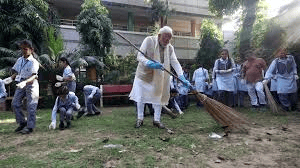
Why in news?
The Swachh Bharat Mission (SBM), initiated by Prime Minister Narendra Modi in 2014, celebrates its 10th anniversary on October 2, 2024. The mission aims to fulfill Mahatma Gandhi’s vision of a clean India, with the objective of achieving this by his 150th birth anniversary in 2019.
About
SBM was launched with the goal of making India open defecation free (ODF) within five years. This initiative contributed to advancing the country towards Sustainable Development Goal 6.2, which seeks to ensure adequate and equitable sanitation access for all, particularly for women and girls. The mission aimed to enhance sanitation and waste management throughout India through infrastructure development and cultural changes promoting cleanliness.
Two parts of the mission
- SBM-Gramin: Focused on rural areas, managed by the Ministry of Drinking Water and Sanitation.
- SBM-Urban: Targeted cities, overseen by the Ministry of Housing and Urban Affairs.
Focus areas of SBM
- Building individual household toilets: Aimed at completely eliminating open defecation by ensuring every household has a toilet.
- Creating community and public toilets: Especially vital in high-traffic and underserved regions where individual toilets may not be practical.
- Solid waste management: Efficient handling of waste collection, segregation, and disposal to enhance cleanliness.
- Awareness and behavioral change campaigns: Encouraging public awareness on the importance of cleanliness and hygiene to foster sustainable behavioral changes.
Targets of SBM
SBM was designed to eradicate open defecation by constructing millions of toilets for households and communities. The ODF criteria stipulated that no one in a city or ward should be found defecating in the open at any time.
The mission prioritized providing individual toilets for every household, community toilets, and proper waste management systems for schools and anganwadi centers. To facilitate this, government funding increased from Rs 10,000 (under the previous Nirmal Bharat Abhiyan) to Rs 12,000 per toilet.
Following the initial five years of the mission, SBM 2.0 was launched in 2021, shifting focus toward creating garbage-free cities and addressing issues such as faecal sludge, plastic waste, and greywater management for improved urban sanitation.
Toilet Construction and ODF Declarations
- Toilets Built: More than 10 crore toilets have been constructed under this initiative.
- ODF Villages: As of October 2, 2019, 6 lakh villages were declared ODF.
- Urban ODF Status: By December 2019, urban India, except for certain cities in West Bengal, was declared ODF by the Ministry of Housing and Urban Affairs.
Targets and Financial Support
- Individual Toilets: A total of 66 lakh individual toilets were built, exceeding the target of 59 lakh.
- Financial Assistance: The Centre allocated Rs 57,469.22 crore to states and Union Territories for SBM-Gramin from 2014-2015 to 2018-2019, while the budget for SBM-Urban reached Rs 62,009 crore.
ODF+ Achievements
- ODF+ Declarations: 5.54 lakh villages and 3,913 cities have been declared ODF+ under SBM-Gramin 2.0 and SBM-Urban 2.0 since 2020-21.
- ODF+ status indicates that these areas have established arrangements for liquid waste management.
Future Plans and Allocations
- SBM-G 2.0 Budget: The Cabinet sanctioned Rs 1.40 lakh crore for SBM-Gramin 2.0 from 2020-21 to 2024-2025, with Rs 52,497 crore allocated from the Drinking Water and Sanitation Department.
- SBM-U 2.0 Approval: SBM-Urban 2.0 received approval in 2021 with an allocation of Rs 1.41 lakh crore.
Landfill Remediation Progress
- Legacy Landfills: The objective is to clear all 2,400 legacy landfills in cities by 2025-2026. Currently, 30% of the targeted area has been cleared, and 41% of the waste remediation goal has been achieved.
- Waste Management Statistics: The SBM-U dashboard reports that 97% of municipal wards have implemented door-to-door waste collection, while 90% have achieved 100% segregation at the source.
Impact of Swachh Bharat Mission on Health
- Deaths Averted: The WHO estimated that from 2014 to October 2019, SBM-Gramin could prevent approximately 3 lakh deaths related to diarrhoea and protein-energy malnutrition.
- Prior to SBM, unsafe sanitation caused around 199 million diarrhoea cases annually, a number that has progressively declined since the mission's implementation.
Link to Infant Mortality Reduction
A recent study published in Nature highlighted a significant relationship between the SBM and a decrease in infant mortality rates, suggesting that the mission may have led to 60,000 to 70,000 fewer infant deaths annually from 2014 to 2020. Although there was a general decline in infant mortality from 2003 to 2020, the reduction accelerated post-2015, aligning with SBM initiatives.
Toilet Access
According to the 2011 Census, 53.1% of households (both rural and urban) did not have any toilet facilities. The extent of progress in toilet access since then remains to be evaluated, as the Census 2021 has been postponed.
Quality of Construction
- Substandard Toilets: Numerous toilets constructed under SBM have been reported to be of inadequate quality, lacking proper sanitation facilities and not meeting required standards.
- Non-Functional Toilets: Some toilets constructed remain unused or non-functional due to maintenance problems or insufficient water supply.
Data Discrepancies
- Inflated Numbers: Critics have raised concerns regarding discrepancies in ODF declarations versus actual ground realities, suggesting that some declared ODF areas may not meet the necessary criteria.
- Verification Issues: The verification process for ODF status has been challenged, with claims that local officials may have exaggerated achievements to meet targets.
Focus on Infrastructure Over Behavior Change
- Lack of Awareness Campaigns: Critics argue that the mission has focused excessively on toilet construction without sufficient emphasis on awareness and promoting behavioral changes in sanitation practices.
- Cultural Resistance: In many regions, entrenched social norms and cultural customs regarding sanitation persist, meaning that simply building toilets does not necessarily alter people's usage behavior.
Implementation Challenges
- Insufficient Monitoring: There have been calls for enhanced monitoring and evaluation of SBM initiatives at the ground level to ensure their effectiveness.
- Local Government Capacity: Some local bodies may lack the necessary capacity or resources to implement the mission effectively, resulting in execution challenges.
Exclusion of Marginalized Groups
- Accessibility Issues: Reports suggest that marginalized communities, including Scheduled Castes and Scheduled Tribes, often encounter barriers in accessing sanitation facilities, undermining the mission's goals of inclusivity.
- Gender Concerns: SBM has faced criticism for not adequately addressing the specific sanitation needs of women and girls, such as those related to menstrual hygiene management.
Environmental Concerns
- Solid Waste Management: While the mission addresses toilet construction, critics argue that it has not sufficiently tackled solid waste management issues, which continue to pose significant environmental challenges.
- Sustainability Issues: Critics emphasize that, without sustainable practices such as proper waste disposal and treatment systems, the long-term success of the mission may be at risk.
Delayed Census and Lack of Data
- Impact Measurement: The postponement of Census 2021 has obstructed the ability to evaluate the actual impact of SBM on sanitation coverage and improvements, raising concerns over the reliability of available data.
GS2/Governance
Jal Hi AMRIT Programme
Source: Hindustan Times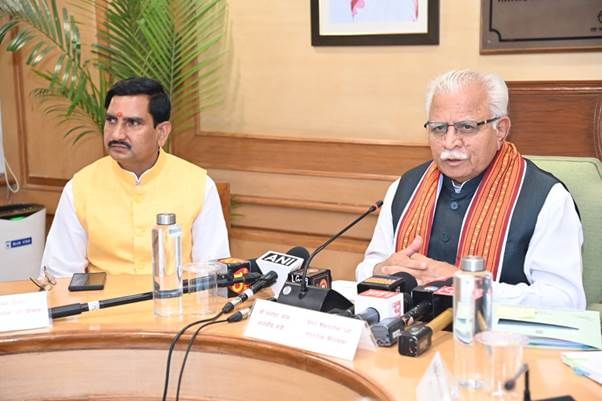
Why in News?
Recently, the Union Minister for Housing and Urban Affairs announced the introduction of the Jal Hi AMRIT scheme within the first 100 days of the government.
About Jal Hi AMRIT Programme:
- The Jal Hi AMRIT Programme was launched as part of the larger AMRUT 2.0 initiative.
- This scheme aims to encourage State and Union Territories to manage used water treatment plants (UWTPs/STPs) effectively, ensuring that the treated water is of good quality and meets environmental standards consistently.
- The initiative focuses on fostering competition among cities, enhancing their capabilities, and motivating them to produce high-quality treated water from their facilities.
- A significant aspect of the programme is on capacity building and incentivizing improvements in the quality of the treated water discharged.
- There will be a mid-course evaluation and water quality assessments, leading to a final assessment that awards Clean Water Credits. This will be represented through a Star-rating certification that ranges from 3 to 5 stars, valid for six months.
Key facts about AMRUT 2.0 scheme:
- The AMRUT 2.0 scheme is set for a duration of five years, from the financial year 2021-22 to 2025-26.
- It aims to achieve universal access to water supply with functional taps for all households in statutory towns across the country.
- The scheme also focuses on sewerage and septage management, targeting 500 cities that were part of the initial AMRUT scheme.
- AMRUT 2.0 promotes a circular economy for water through the development of a City Water Balance Plan (CWBP) for each city, emphasizing the recycling and reuse of treated sewage, revitalizing water bodies, and conserving water resources.
GS3/Economy
SEBI Tightens F&O Rules
Source: Money Control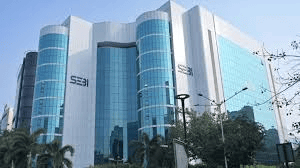
Why in News?
The Securities and Exchange Board of India (SEBI) has put in place six new regulations designed to lessen retail participation in the high-risk Futures and Options (F&O) market.
About F&O:
- Futures and Options (F&O) are derivative financial instruments that derive their value from an underlying asset, such as stocks, commodities, or indices.
- These instruments are extensively traded in the Indian stock market, mainly on the National Stock Exchange (NSE) and the Bombay Stock Exchange (BSE).
- Understanding F&O is essential for investors aiming to hedge risks, speculate, or enhance their portfolio strategies.
- In India, the trading of F&O is regulated by the SEBI.
What are Derivatives?
- Derivatives refer to financial contracts whose value is contingent on an underlying asset, which may include equities, indices, commodities, or currencies.
- Futures and Options are the two most common types of derivative contracts in India.
About Futures:
- A futures contract is a legal agreement to buy or sell an asset at a predetermined price on a specified future date.
- Both the buyer and seller are bound to execute the transaction at the agreed-upon price, irrespective of the current market value at contract maturity.
Key Features:
- Standardized Contracts: Futures contracts are standardized concerning quantity, quality, and delivery timeline.
- Leverage: Investors can trade significant amounts of assets by only putting down a fraction of the value, known as margin, which offers leverage but also increases risk.
- Mark-to-Market: Futures contracts are marked to market daily, meaning that profits and losses are calculated at the end of each trading day.
- Settlement: In India, most futures contracts are settled in cash, although some commodity futures may involve physical delivery.
- Example: If you buy a Nifty 50 futures contract at 19,000 and the market rises to 19,500 by the contract's expiry, you profit ₹500 per unit. Conversely, if the market drops to 18,500, you incur a loss of ₹500 per unit.
About Options:
Options contracts grant the holder the right, but not the obligation, to buy or sell an asset at a predetermined price before or on the expiry date of the contract.
There are two types of options: Call options and Put options.
- Call Option: A call option provides the buyer the right to purchase the underlying asset at a fixed price within a specified timeframe, typically used when investors anticipate a price increase.
- Put Option: A put option gives the buyer the right to sell the underlying asset at a predetermined price within a specific timeframe, usually when investors expect a price decline.
Premium:
- In both call and put options, the buyer pays a premium to the seller (writer) for the right to exercise the option, which is the cost of purchasing the option.
- For instance, if you buy a call option on Reliance stock with a strike price of ₹2,500 and the stock price rises to ₹2,700 before expiry, you can buy it at ₹2,500, gaining ₹200 per share.
- If you purchase a put option for the same stock at a strike price of ₹2,500, and the price falls to ₹2,300, you can sell it at ₹2,500, earning ₹200 per share.
Sebi Tightens F&O Rules:
- Increasing the minimum contract value to ₹15 lakh,
- Mandating upfront payment of options premiums,
- Restricting weekly expiries to one per exchange, and
- Raising margins as contracts near expiry.
- The regulations will be rolled out in phases, starting with higher contract sizes and a 2% increase in loss margin for short options on expiry day, effective November 20, 2024.
- Additional measures, such as the elimination of calendar spread benefits, will commence on February 1, 2025, and monitoring of intra-day position limits will start from April 1, 2025.
- These actions are in response to concerns from the Reserve Bank of India (RBI) and the Finance Ministry regarding significant retail investor losses in speculative F&O trades.
- A SEBI study revealed that 93% of retail traders experienced losses averaging ₹2 lakh over the past three financial years, leading to a total net loss of ₹1.81 trillion between FY22 and FY24.
- While these regulations aim to improve market risk management and reduce speculative behavior, brokerage firms and stock exchanges are anticipated to see a decrease in F&O trading volumes by 30-40%.
GS3/Environment
Mudumalai Tiger Reserve
Source: The Hindu
Why in News?
Recently, a survey focusing on herpetofauna—specifically reptiles and amphibians—was conducted in the Mudumalai Tiger Reserve (MTR), resulting in the discovery of 33 reptile and 36 amphibian species that had not previously been documented in the area.
About Mudumalai Tiger Reserve:
- Location: Situated in the Nilgiris District of Tamil Nadu at the meeting point of Karnataka, Kerala, and Tamil Nadu.
- The name 'Mudumalai' translates to 'ancient hill range,' reflecting its age of approximately 65 million years, coinciding with the formation of the Western Ghats.
- It shares its boundaries with Wayanad Wildlife Sanctuary in Kerala to the west and Bandipur Tiger Reserve in Karnataka to the north.
- The Theppakadu elephant camp is a notable attraction for tourists.
Vegetation:
- The reserve features diverse habitats including tropical evergreen forests, moist deciduous forests, moist teak forests, dry teak forests, secondary grasslands, and swamps.
Flora:
- The region is home to tall grasses, commonly known as 'Elephant Grass,' giant bamboo, and valuable timber species such as Teak and Rosewood.
Fauna:
- Wildlife includes Elephants, Gaur, Tigers, Panthers, Spotted Deer, Barking Deer, Wild Boars, and Porcupines.
Highlights of the Survey:
- Two critically endangered amphibian species were identified: Micrixalus spelunca, known as the cave dancing frog, and Nyctibatrachus indraneili, also referred to as Indraneil’s Night Frog.
- Other endangered amphibian species discovered include the endemic Star-eyed Bush Frog, Nilgiri Bush Frog, and Nilgiris wart frog.
GS2/Polity
NITI Aayog Report on Future Pandemic Preparedness
Source: Indian Express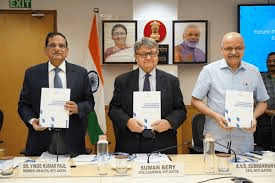
Why in news?
NITI Aayog has released an Expert Group report titled ‘Future Pandemic Preparedness and Emergency Response — A Framework for Action’. This report provides a comprehensive strategy for the nation to prepare for future public health emergencies or pandemics and establishes a rapid response system.
Background – Formation of an Expert Group
- The Expert Group was formed in June 2023 by NITI Aayog to address the increasing likelihood of future pandemics influenced by changing planetary ecology, climate, and interactions between humans, animals, and plants.
- The group was tasked with analyzing the management of COVID-19, identifying both successes and failures, and pinpointing gaps in response strategies to enhance preparedness for future public health emergencies.
- The report offers a detailed blueprint for effective responses to large-scale infectious threats.
Public Health Emergency Management Act (PHEMA)
- The report highlights the shortcomings of existing legal frameworks used during the COVID-19 pandemic, specifically the Epidemic Diseases Act (EDA) of 1897 and the National Disaster Management Act (NDMA) of 2005.
- The EDA lacks clear definitions for critical terms such as "dangerous" or "infectious" diseases and fails to address procedures for drug distribution, vaccination, quarantine, or preventive measures.
- Similarly, the NDMA is not tailored for health emergencies, focusing instead on natural disasters.
- The report recommends enacting a new Public Health Emergency Management Act (PHEMA) to fill these gaps, empowering central and state governments to effectively respond to pandemics and other health emergencies, including non-communicable diseases and bioterrorism.
- PHEMA would enable public health agencies to act swiftly in crises, establishing trained public health teams at national and state levels to serve as first responders.
Empowered Panel of Secretaries
- The report suggests forming an Empowered Group of Secretaries (EGoS), led by the Cabinet Secretary, to oversee public health emergency preparedness and response.
- This committee will function during non-crisis times to strengthen governance, finance, research and development, surveillance, and partnerships, ensuring a quick response to emergencies.
- EGoS will also create Standard Operating Procedures (SOPs) for pandemic management and set up sub-committees to effectively handle these critical areas, thereby enhancing the nation’s readiness for future health crises.
Strengthening Surveillance
- The report emphasizes the necessity of enhancing India’s disease surveillance network, particularly in light of previous epidemics and pandemics often linked to viruses from bats.
- It underscores the importance of continuous monitoring at human-bat interfaces.
- Key suggestions include establishing a national biosecurity and biosafety network that connects leading research institutions, biosafety labs, and genome sequencing centers.
- This network should operate in a coordinated and automated manner to swiftly address early warning signs of public health threats.
- The report also proposes creating an emergency vaccine bank to source vaccines quickly, whether domestically or internationally, ensuring rapid access during health emergencies.
Network for Early Warning
- The establishment of an epidemiology forecasting and modeling network is advocated to predict infectious disease transmission dynamics and evaluate the effectiveness of countermeasures such as vaccines.
- Additionally, a network of Centres of Excellence (CoE) focusing on priority pathogens is recommended to conduct research on diagnostics, therapeutics, and vaccines for pathogens identified by the World Health Organization, ensuring preparedness for future public health emergencies.
Independent Drug Regulator
- The report stresses the importance of India creating a robust clinical trial network recognized by international regulatory authorities to ensure quick access to innovative medical products during public health emergencies.
- It highlights the need to make the Central Drugs Standards Control Organisation (CDSCO) an independent entity with special powers, as it currently operates under the Ministry of Health.
- Greater autonomy for the CDSCO is recommended to facilitate faster and more efficient responses in crises.
Other Recommendations
- 100-Day Preparedness Strategy: The experts emphasize that an effective response within the first 100 days of an outbreak is crucial, advocating for a rapid response system to be operational during this critical period.
- Public Health Workforce: There is a need to expand and enhance the public health workforce, particularly in rural and underserved areas, to strengthen the overall health system.
- Supply Chain Resilience: Developing a strong supply chain for essential medical supplies, vaccines, and personal protective equipment (PPE) is vital for effective pandemic management.
- Digital Infrastructure and Data Sharing: Leveraging technology and establishing data-sharing frameworks is essential for ensuring transparency, coordination, and swift action during health emergencies.
GS3/Science and Technology
BharatGen
Source: The Hindu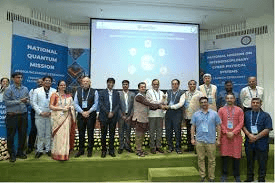
Why in News?
Recently, the BharatGen initiative was launched by the Union Ministry of Science & Technology.
About BharatGen:
- BharatGen is an initiative aimed at developing generative AI systems capable of creating high-quality text and multimodal content in various Indian languages.
- This initiative represents the first government-supported project focused on Multimodal Large Language Models.
- The implementation is led by IIT Bombay under the National Mission on Interdisciplinary Cyber-Physical Systems (NM-ICPS).
Features of BharatGen:
- It encompasses a multilingual and multimodal framework for foundation models.
- The initiative will utilize a dataset that is specifically curated from Indian sources for its development and training processes.
- The project aims to foster an open-source platform that will contribute to the generative AI research ecosystem in India.
- Completion of the project is anticipated within two years, with expected benefits for numerous government, private, educational, and research institutions.
What is Multimodal Large Language Model?
- A Multimodal Large Language Model is designed to handle and generate multiple types of data, including text, images, and occasionally audio and video.
- These models are trained on extensive datasets that include both textual and visual information, allowing them to understand the connections between different forms of data.
- Applications of these models are diverse, ranging from image captioning and visual question answering to content recommendation systems that leverage both text and image data for personalized suggestions.
GS3/ Economy
Five-Hundred Aperture Spherical Telescope (FAST)
Source: MSN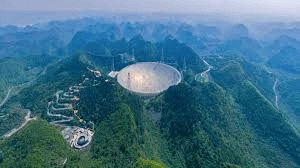
Why in News?
China has kicked off a second phase of construction to enhance the capabilities of the Five-Hundred Aperture Spherical Telescope (FAST).
- Five-Hundred Aperture Spherical Telescope (FAST) is located in Guizhou Province, China.
- It is the largest and most sensitive radio telescope in the world, with a receiving area that is as big as 30 football fields.
- The telescope has a diameter of 500 meters.
Scientific Goals
- To detect neutral hydrogen at the farthest reaches of the universe.
- To recreate images of the early universe.
- To find pulsars, create a pulsar timing array, and get involved in pulsar navigation and the detection of gravitational waves in the future.
- To join the International Very-Long-Baseline Interferometry Network to study the fine details of celestial objects.
- To conduct a high-resolution radio spectral survey.
- To pick up weak signals from space.
- To assist in the search for extraterrestrial intelligence.
FAST utilizes a data system that was developed at the International Center for Radio Astronomy in Perth, Australia, and at the European Southern Observatory. This system helps manage the large amounts of data generated by the telescope.
|
38 videos|5283 docs|1116 tests
|
FAQs on UPSC Daily Current Affairs: 2nd October 2024 - Current Affairs & Hindu Analysis: Daily, Weekly & Monthly
| 1. What are the key features of the Insolvency and Bankruptcy Code (IBC) reforms? |  |
| 2. What impact has the Swachh Bharat Mission had over the past 10 years? |  |
| 3. What is the Jal Hi AMRIT Programme and its objectives? |  |
| 4. What are the new rules implemented by SEBI regarding F&O (Futures and Options)? |  |
| 5. What is the significance of the Five-Hundred Aperture Spherical Telescope (FAST) in astronomical research? |  |





















